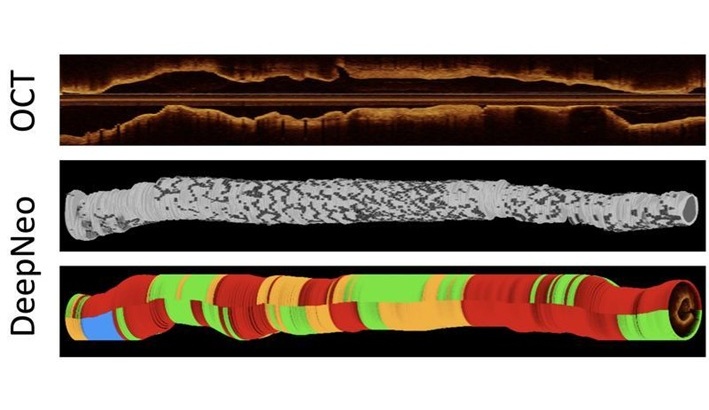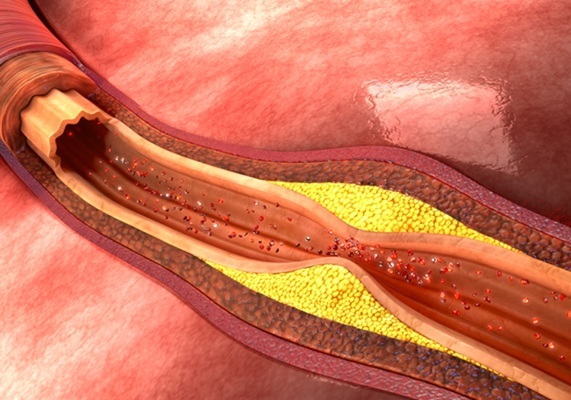Predictive Model Identifies Best Patients for Minimally Invasive Epilepsy Surgery
|
By HospiMedica International staff writers Posted on 09 Oct 2024 |
_3.jpeg)
Epilepsy, a neurological disorder that causes recurrent seizures, affects nearly 3 million people in the U.S., with about one-third not responding effectively to medications. For these individuals, surgery to remove or disable the part of the brain responsible for seizures can be a viable treatment, though predicting which patients will become seizure-free has been challenging. Now, a new scoring system may help doctors better predict which patients are likely to be free of seizures after undergoing minimally invasive epilepsy surgery.
Researchers from Rutgers Health (New Brunswick, NJ, USA) and other institutions have developed a predictive model aimed at improving access to surgical treatment for epilepsy. Their model, based on data from 101 patients who underwent stereotactic laser amygdalohippocampotomy (SLAH)—a minimally invasive procedure using laser interstitial thermal therapy (LITT) to target and disable a small region of the brain’s temporal lobe—identifies eight clinical factors linked to a higher likelihood of becoming seizure-free post-surgery. These factors include patient history, MRI abnormalities, lesions, and febrile seizures. Instead of using complex statistical models, the team created a straightforward scoring system by assigning one point for each positive factor, which outperformed other predictive models, including those based solely on MRI findings or more elaborate analyses.
The findings, published in Annals of Clinical and Translational Neurology, show that patients with a score of 6 or higher on the 8-point scale had a 70% to 80% chance of becoming seizure-free after SLAH—comparable to success rates of traditional open surgery. Patients with lower scores experienced progressively reduced chances of achieving seizure freedom. Interestingly, even those without clear MRI evidence of scarring in the temporal lobe—long considered a key indicator for surgical success—could still benefit from SLAH if they had several other positive factors. This approach could help broaden the availability of surgical treatment for epilepsy, which remains underutilized. Many patients are reluctant to pursue invasive brain surgery due to concerns about cognitive side effects, but the less invasive SLAH procedure might be more attractive, especially with clearer predictions about the likelihood of success.
Although this predictive model could be used to guide clinical decisions, the researchers acknowledge it requires further validation on additional patient outcome data beyond their initial study group. The scoring system also does not account for all potential factors that might affect surgical outcomes, such as the distribution of abnormal brain activity across hemispheres or specific seizure types. Despite these limitations, the researchers believe this model marks a significant advancement in personalizing epilepsy treatment. By offering more refined predictions of surgical outcomes, this tool may enable more patients with drug-resistant epilepsy to achieve relief through minimally invasive procedures. As research progresses, the model may be enhanced by incorporating more detailed data, such as seizure characteristics and neuropsychological profiles, potentially leading to even more accurate predictions and improved patient care.
"We've pried open the therapeutic window with this minimally invasive approach," said Robert Gross, senior author of the study and chair of the Department of Neurosurgery at the Rutgers Robert Wood Johnson and New Jersey Medical School. "The concordance of multiple clinical data points better predicts seizure freedom after SLAH than any one data point alone."
Latest Surgical Techniques News
- DNA Origami Improves Imaging of Dense Pancreatic Tissue for Cancer Detection and Treatment
- Pioneering Sutureless Coronary Bypass Technology to Eliminate Open-Chest Procedures
- Intravascular Imaging for Guiding Stent Implantation Ensures Safer Stenting Procedures
- World's First AI Surgical Guidance Platform Allows Surgeons to Measure Success in Real-Time
- AI-Generated Synthetic Scarred Hearts Aid Atrial Fibrillation Treatment
- New Class of Bioadhesives to Connect Human Tissues to Long-Term Medical Implants
- New Transcatheter Valve Found Safe and Effective for Treating Aortic Regurgitation
- Minimally Invasive Valve Repair Reduces Hospitalizations in Severe Tricuspid Regurgitation Patients
- Tiny Robotic Tools Powered by Magnetic Fields to Enable Minimally Invasive Brain Surgery
- Magnetic Tweezers Make Robotic Surgery Safer and More Precise
- AI-Powered Surgical Planning Tool Improves Pre-Op Planning
- Novel Sensing System Restores Missing Sense of Touch in Minimally Invasive Surgery
- Headset-Based AR Navigation System Improves EVD Placement
- Higher Electrode Density Improves Epilepsy Surgery by Pinpointing Where Seizures Begin
- Open-Source Tool Optimizes Placement of Visual Brain Implants
- Easy-To-Apply Gel Could Prevent Formation of Post-Surgical Abdominal Adhesions
Channels
Critical Care
view channel
AI Model Analyzes Patient Data to Diagnose Multiple Sclerosis With 90% Accuracy
Multiple sclerosis (MS) is a chronic inflammatory condition affecting the central nervous system. Most patients initially experience the relapsing-remitting form (RRMS), characterized by periods of symptom... Read more
Magnetically Navigable Microparticles Enable Targeted Drug Delivery
Abdominal aortic aneurysms (AAA) can be life-threatening if not treated and result in nearly 10,000 deaths annually. Researchers working to improve treatments for AAA could now make it possible for doctors... Read more
AI-Powered Algorithm Automates Analysis of Coronary Stents After Implantation
Every year, over three million people globally receive stents to open blocked blood vessels caused by heart disease. However, monitoring the healing process after stent implantation remains a significant challenge.... Read morePatient Care
view channel
Portable Biosensor Platform to Reduce Hospital-Acquired Infections
Approximately 4 million patients in the European Union acquire healthcare-associated infections (HAIs) or nosocomial infections each year, with around 37,000 deaths directly resulting from these infections,... Read moreFirst-Of-Its-Kind Portable Germicidal Light Technology Disinfects High-Touch Clinical Surfaces in Seconds
Reducing healthcare-acquired infections (HAIs) remains a pressing issue within global healthcare systems. In the United States alone, 1.7 million patients contract HAIs annually, leading to approximately... Read more
Surgical Capacity Optimization Solution Helps Hospitals Boost OR Utilization
An innovative solution has the capability to transform surgical capacity utilization by targeting the root cause of surgical block time inefficiencies. Fujitsu Limited’s (Tokyo, Japan) Surgical Capacity... Read more
Game-Changing Innovation in Surgical Instrument Sterilization Significantly Improves OR Throughput
A groundbreaking innovation enables hospitals to significantly improve instrument processing time and throughput in operating rooms (ORs) and sterile processing departments. Turbett Surgical, Inc.... Read moreHealth IT
view channel
Printable Molecule-Selective Nanoparticles Enable Mass Production of Wearable Biosensors
The future of medicine is likely to focus on the personalization of healthcare—understanding exactly what an individual requires and delivering the appropriate combination of nutrients, metabolites, and... Read more
Smartwatches Could Detect Congestive Heart Failure
Diagnosing congestive heart failure (CHF) typically requires expensive and time-consuming imaging techniques like echocardiography, also known as cardiac ultrasound. Previously, detecting CHF by analyzing... Read moreBusiness
view channel
Expanded Collaboration to Transform OR Technology Through AI and Automation
The expansion of an existing collaboration between three leading companies aims to develop artificial intelligence (AI)-driven solutions for smart operating rooms with sophisticated monitoring and automation.... Read more
















